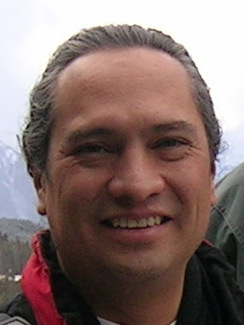Francisco Valero-Cuevas
Francisco Valero-Cuevas is a prominent figure in the fields of biomechanics, robotics, and neuroscience. His interdisciplinary work focuses on understanding the neuromechanical systems that underlie human movement. Valero-Cuevas has made significant contributions to the development of theoretical and computational models that explain how the nervous system controls muscles to produce movement. His research has applications in rehabilitation engineering, prosthetics, and the design of robotic systems that mimic human dexterity.
Early Life and Education[edit | edit source]
Francisco Valero-Cuevas was born in Spain. He pursued his undergraduate education in engineering, showing early interest in the mechanics of movement. Valero-Cuevas completed his Bachelor's degree in Engineering, after which he moved to the United States to further his education. He earned a Master's degree in Mechanical Engineering, followed by a Ph.D. in Neuroscience and Biomechanics, focusing on the control of movement in humans and robots. His multidisciplinary approach to studying movement has been a hallmark of his career.
Career and Research[edit | edit source]
After completing his Ph.D., Francisco Valero-Cuevas joined the faculty of a prestigious university, where he established a research lab dedicated to understanding the fundamentals of human and robotic movement. His work has been characterized by a strong emphasis on integrating computational models with experimental data to unravel the complex interactions between the nervous system and the musculoskeletal system.
Valero-Cuevas' research has led to the development of novel computational models that simulate the control of limbs in a variety of tasks. These models have provided insights into how the brain solves the problem of controlling the many degrees of freedom in the human hand, leading to advancements in the design of prosthetic devices and robotic systems capable of performing complex manipulative tasks.
In addition to his contributions to biomechanics and robotics, Valero-Cuevas has been involved in developing tools and methods for rehabilitation. His work aims to improve the understanding of muscle coordination and control in individuals recovering from neurological injuries, leading to more effective rehabilitation strategies.
Publications and Awards[edit | edit source]
Francisco Valero-Cuevas has authored numerous scientific publications in prestigious journals, covering topics from the mechanics of muscle coordination to the development of robotic systems. His work is widely recognized in the scientific community, and he has received several awards for his contributions to the fields of biomechanics and robotics.
Teaching and Mentorship[edit | edit source]
Beyond his research, Valero-Cuevas is committed to education and mentorship. He has taught courses in biomechanics, robotics, and neural control of movement, inspiring a new generation of engineers and scientists. His dedication to teaching is matched by his efforts to mentor students and postdoctoral researchers in his lab, many of whom have gone on to successful careers in academia and industry.
Conclusion[edit | edit source]
Francisco Valero-Cuevas' work sits at the intersection of engineering, neuroscience, and robotics, offering profound insights into the control of movement. Through his research, teaching, and mentorship, he continues to contribute to our understanding of human and robotic dexterity, with significant implications for rehabilitation, prosthetics, and robotic design.
Search WikiMD
Ad.Tired of being Overweight? Try W8MD's physician weight loss program.
Semaglutide (Ozempic / Wegovy and Tirzepatide (Mounjaro / Zepbound) available.
Advertise on WikiMD
|
WikiMD's Wellness Encyclopedia |
| Let Food Be Thy Medicine Medicine Thy Food - Hippocrates |
Translate this page: - East Asian
中文,
日本,
한국어,
South Asian
हिन्दी,
தமிழ்,
తెలుగు,
Urdu,
ಕನ್ನಡ,
Southeast Asian
Indonesian,
Vietnamese,
Thai,
မြန်မာဘာသာ,
বাংলা
European
español,
Deutsch,
français,
Greek,
português do Brasil,
polski,
română,
русский,
Nederlands,
norsk,
svenska,
suomi,
Italian
Middle Eastern & African
عربى,
Turkish,
Persian,
Hebrew,
Afrikaans,
isiZulu,
Kiswahili,
Other
Bulgarian,
Hungarian,
Czech,
Swedish,
മലയാളം,
मराठी,
ਪੰਜਾਬੀ,
ગુજરાતી,
Portuguese,
Ukrainian
Medical Disclaimer: WikiMD is not a substitute for professional medical advice. The information on WikiMD is provided as an information resource only, may be incorrect, outdated or misleading, and is not to be used or relied on for any diagnostic or treatment purposes. Please consult your health care provider before making any healthcare decisions or for guidance about a specific medical condition. WikiMD expressly disclaims responsibility, and shall have no liability, for any damages, loss, injury, or liability whatsoever suffered as a result of your reliance on the information contained in this site. By visiting this site you agree to the foregoing terms and conditions, which may from time to time be changed or supplemented by WikiMD. If you do not agree to the foregoing terms and conditions, you should not enter or use this site. See full disclaimer.
Credits:Most images are courtesy of Wikimedia commons, and templates Wikipedia, licensed under CC BY SA or similar.
Contributors: Prab R. Tumpati, MD

